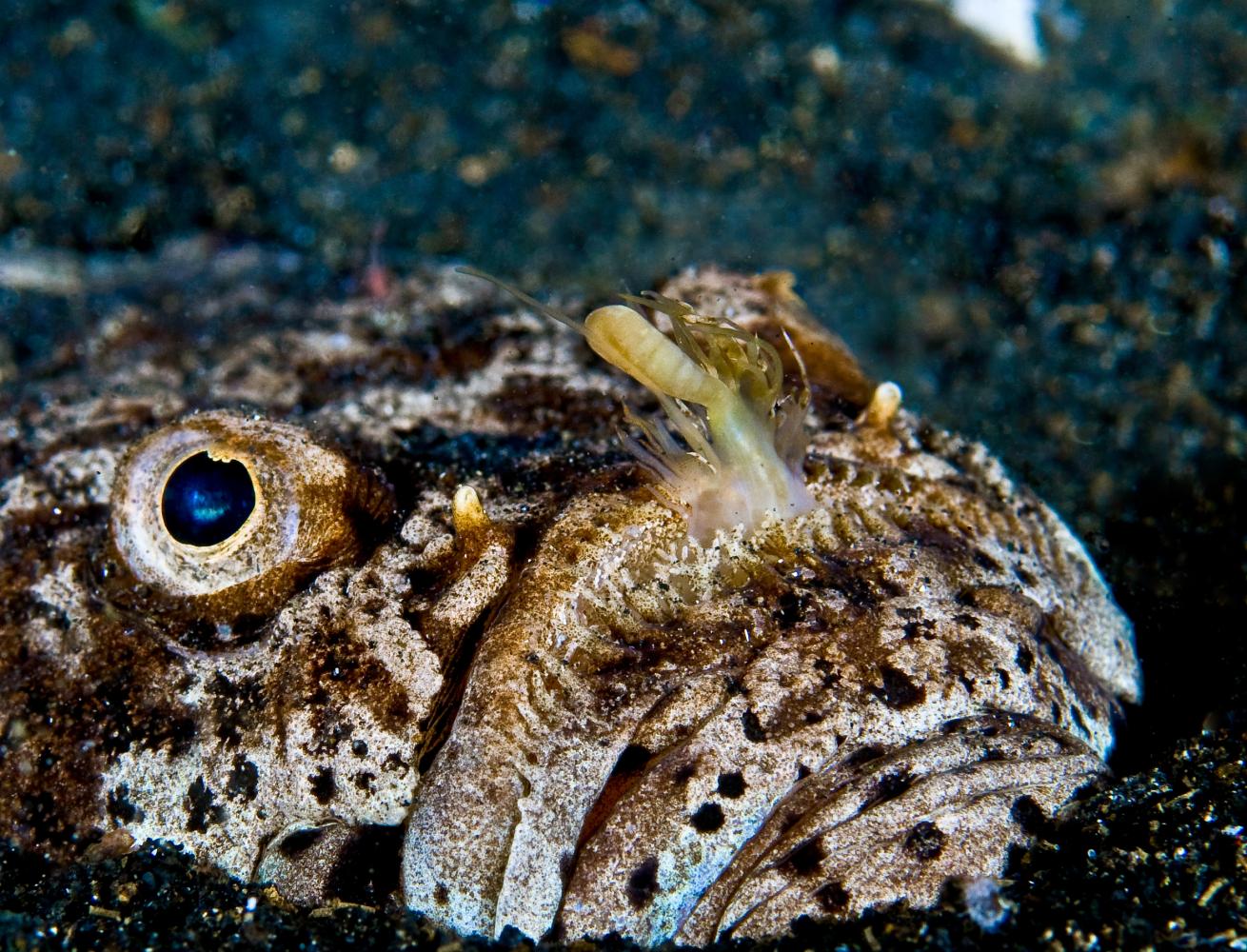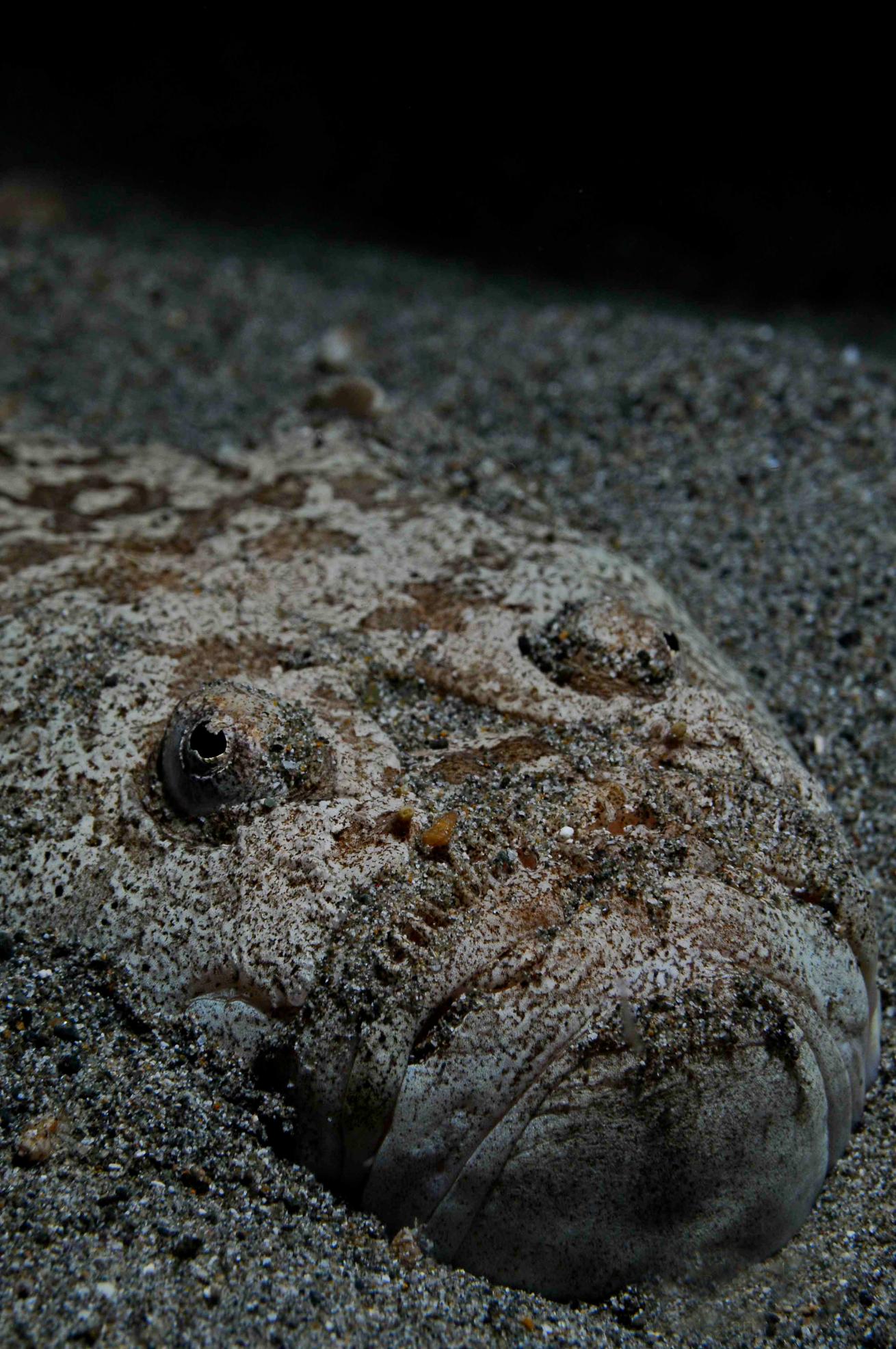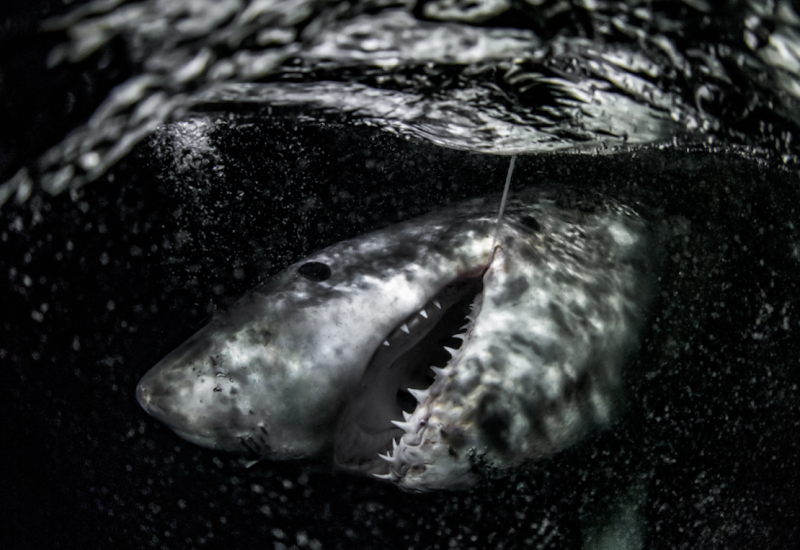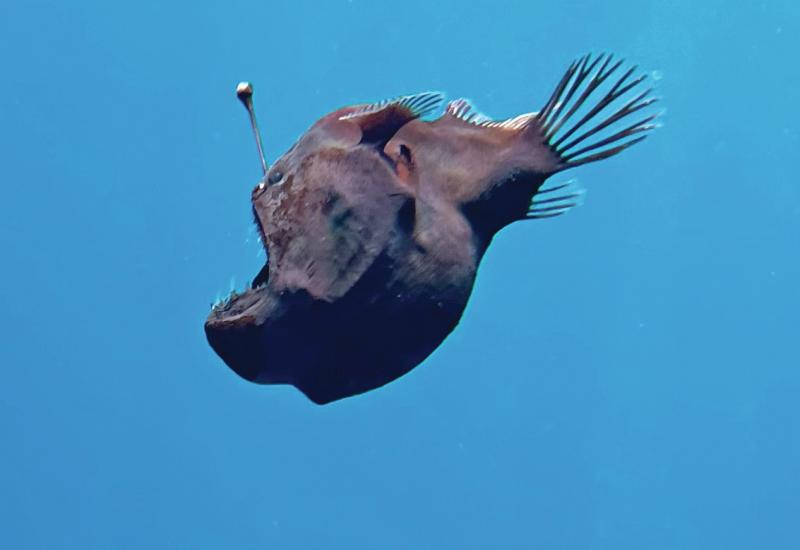Reef Encounters: Sci-Fi Creatures

Mike Bartick

Mike Bartick

Mike Bartick

Mike Bartick
It’s no secret that the Indo-Pacific is loaded with interesting critters and divers have discovered that gliding over a sandy substrate after the sun goes down can be an incredible way to see them. At first, the sandy savannah may seem a bit lifeless, but for those who have witnessed this nightly drama before know that life can sometimes be stranger than science fiction.
A changing of the guard takes place each evening as the cast of daytime critters seeks refuge and nocturnal critters come out to feed. A prime example is the nasty subterranean polychaete nicknamed the bobbit worm (Eunice aphroditois). Armed with a calcified jawbone, oral tentacles and chemical receptors, this creature could have been cast as a desert-dwelling sandworm from the planet of Arrakis in David Lynch’s sci-fi movie Dune (based on the novel by Frank Herbert). The bobbit worm attacks so fast that its prey is sometimes sliced in half and delivers a sting from its bristles that can leave a person suffering from permanent numbness.
Another nocturnal ambush predator is the stargazer, a fish that prefers this habitat so that it can more easily ambush its prey. Stargazers, in the family Uranoscopidae, have eyes on top of their heads. They are forever gazing upwards towards the night sky giving it the common name of stargazer. Hiding itself just below the sand, with black eyes barely exposed, it watches everything that comes in close proximity. Some stargazer species have a worm-shaped lure growing out of the floor of the mouth, which they can wiggle to attract prey’s attention. Other fish see the lure as a quick snack, but once they take the “bait”, find themselves quickly eaten. Stargazers are also venomous; they have two large poison spines situated behind the opercle and above the pectoral fins. Some species can also cause electric shocks. Once you find one, gently wave your hand to clear enough sand away to reveal the macabre skull-like features that this nasty critter is so well known for.
The award given to a creature that seems more sci-fi than fact has to be handed to the deadly Synanceia or stonefish. One of the most venomous fishes currently known in the world, its common name comes from its ability to camouflage itself with a grey and mottled colour similar to the colour of a stone. Stonefish are found in rocky rubble on or near the base of walls and coral heads. This fleshy goblin conceals enough venom in its hypodermic-like spines to kill a human. Using its scabby appearance to hide in plain sight, this lie-and-wait predator uses a gape-feeding strike method, inhaling its victim by dropping its jaw and enlarging its bucket-size mouth at the blink of an eye.
Good buoyancy is a must with such veracious predators on the substrate. Mind where you place a hand on the bottom! Night diving anywhere can be a fun experience but in the Indo-Pacific, life truly is stranger than science fiction.
Mike Bartick was born and raised in Southern California, not far from the ocean in Huntington Beach. After finding his first nudibranch on an Open Water checkout dive, he was immediately hooked on diving. Bartick, who splits his time between the Indo-Pacific and the Eastern Pacific as a freelance photographer, photojournalist and field guide, shoots with a Nikon D300 and D300s, Sea and Sea housings, and YS-D1 and YS 250 pro strobes. To see more of his work, visit saltwaterphoto.com.










